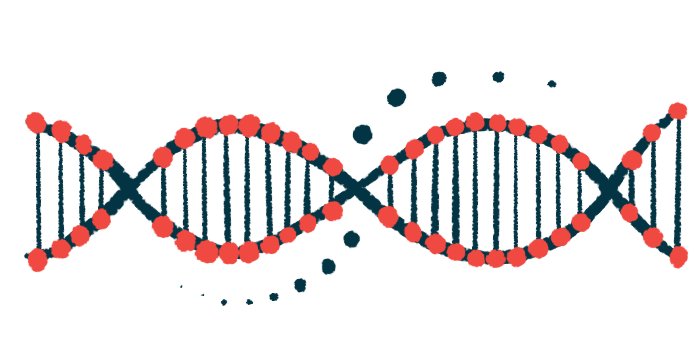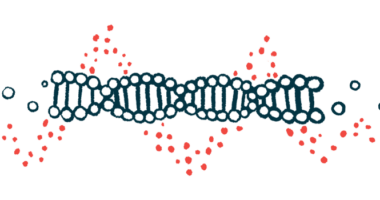Researchers ID mechanism behind severe ABCB11 mutations in PFIC2
Findings could lead to new therapies similar to those for other conditions

Severe mutations in the ABCB11 gene cause progressive familial intrahepatic cholestasis type 2 (PFIC2) by destabilizing the resulting BSEP protein in a specific region, called NBD2, and preventing it from reaching the liver cell surface, where it exerts its function.
These are the findings of a new study that supports the development of therapies to help stabilize and boost the levels of BSEP in the liver cell surface. The approach would be similar to that for the CFTR modulators that have transformed the treatment of cystic fibrosis, a rare genetic disease that causes thick mucus to build up in the body.
This novel research in PFIC2 was done by scientists from Rectify Pharma, a company that’s advancing therapies for cholestatic diseases, and the Massachusetts Institute of Technology (MIT).
According to Rajesh Devraj, PhD, president and CEO of Rectify, “this study provides detailed structural and mechanistic insights into BSEP misfolding and informs our work developing positive functional modulators to correct membrane protein dysfunction” in PFIC type 2.
“Understanding these aberrant folding mechanisms is essential for advancing novel disease-modifying small molecule candidates that can improve bile flow and composition,” Devraj said in a company press release.
The study, “A structural and mechanistic model for BSEP dysfunction in PFIC2 cholestatic disease,” was published in the journal Communications Biology.
Mutations in ABCB11 gene cause PFIC2, a form of cholestasis
PFIC2 is a form of cholestasis, or impaired flow of the digestive fluid bile from the liver to the intestines, that is caused by mutations in the ABCB11 gene. These mutations result in low levels of working BSEP, a protein that pumps bile salts, a component of bile, out of liver cells.
Without sufficient BSEP activity, bile accumulates to toxic levels in the liver, affecting its function and causing damage. Defects in ABCB11 have also been linked with other conditions marked by cholestasis, such as primary sclerosing cholangitis (PSC) and primary biliary cholangitis.
The most common ABCB11 mutations are missense trafficking mutations, meaning they result in a change in a single amino acid — the building blocks of proteins — that affects the protein’s trafficking, or transport, to the liver cell’s surface, or membrane.
However, “we currently lack an understanding of the mechanisms through which this occurs and, importantly, if these mechanisms can be modulated by drug molecules to achieve a therapeutic benefit,” the researchers wrote.
Patients with cholestatic diseases such as PFIC2 have few therapeutic options, and we are committed to addressing this unmet need by understanding key drivers [of these conditions].
Therapies that correct trafficking/functional defects in a similar pump-like protein at the cell membrane, called CFTR modulators, are now approved for people with cystic fibrosis.
Rectify is developing a new class of oral small molecules that can restore and boost membrane protein function to address the underlying cause of a number of serious diseases, including those affecting bile flow, the nervous system, and other body systems.
“Patients with cholestatic diseases such as PFIC2 have few therapeutic options, and we are committed to addressing this unmet need by understanding key drivers” of these conditions, Devraj said.
In this study, researchers from Rectify and MIT sought to investigate the direct impact of distinct PFIC2-causing mutations on BSEP.
Study provides ‘detailed insights’ into molecular basis of PFIC2
First, the team looked at BSEP’s thermodynamic stability, or a protein’s resistance to unfolding — known as denaturation — due to temperature changes.
Four BSEP proteins were analyzed: the healthy version, two mutant versions linked to mild PFIC2 (caused by the E297G and D482G mutations), and a mutant version that does not cause PFIC2 but is linked to other cholestatic conditions. All showed similar stability, except E297G — the most common disease-causing mutation — which was markedly less stable.
Two PFIC2-causing mutations, R948C and R1268Q, resulted in BSEP proteins with an intermediate range of destabilization. A third group of mutant BSEP proteins, causing either mild (E297G) or severe (V284L, R1128C, R1153C, R1231W) PFIC2, were highly unstable.
The team noted that all mutations resulting in highly unstable proteins affected a region of BSEP called the nucleotide-binding domain-2, or NBD2, which “may represent a hotspot for destabilization and could play a critical role in BSEP folding,” the researchers wrote. NBD2 binds the molecule ATP, providing energy to pump bile salts.
Next, researchers determined the cellular localization of mutant BSEP because less stable versions would be more susceptible to degradation before reaching the cell membrane.
Two stable BSEP versions and two highly unstable versions (caused by E297G or V284L) were found in the cell membrane and the endoplasmic reticulum (ER), the cellular structure where protein folding and breakdown take place.
Further analyzes showed that the common E297G mutation resulted in two distinct BSEP structures: one identical to healthy BSEP and another with significant NBD2 defects.
“Our results indicate that designing NBD2-targeted, mechanism-based assays to discover small molecule stabilizers would present a novel and promising approach for correcting BSEP trafficking defects,” the scientists wrote. It would help to advance the “development of vital therapies for PFIC2 and other cholestatic diseases.”
Rectify is developing an oral therapy called RTY-694 for PSC that is designed to simultaneously activate BSEP and ABCB4, another cell surface protein known to be altered in PSC. If proven effective, the medication may benefit other cholestatic diseases, including PFICs and PBC.
“This study provides, for the first time, detailed insights into the molecular basis of protein misfolding induced by BSEP mutations, which contribute to cholestatic diseases such as PFIC2,” the researchers wrote.









